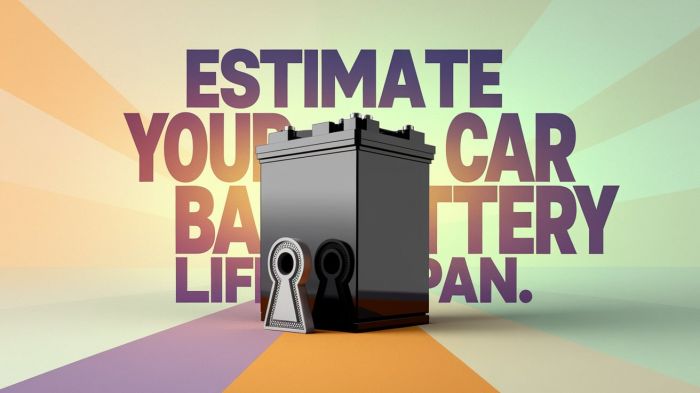One of the top automakers in the world and best recognized for its rotary engine technology, Mazda creates sporty and economical automobiles for anyone to enjoy on daily drives. Being a company with more than a century of experience in the industry, it's definitely hard to go wrong with it.
Brake system malfunction message highlights
- Common reasons:ABS system issues, low brake fluid, other brake problems
- How to fix:check brake fluid, take the car in for inspection
- Possible consequences:brakes may be gone
- Priority level:High
- Can you drive?Not recommended
- DIY repair:Impossible
- Repair price range:$200-$650
.jpg)
What the "Brake System Malfunction" Error is All About
When the "Smart Brake System Malfunction" error occurs in a Mazda, it indicates that there is a problem with the vehicle's braking system. This can be extremely dangerous for the occupants of the vehicle and other road users.
There are potential problems that can occur when this error message is displayed. First, the brakes may not work properly, which could lead to a deadly crash. Additionally, the brake light on the dash may not come on when the brakes are applied, making it difficult for other drivers to know when you are stopping. Moreover, the electronic stability control system may be disabled, which could make it more difficult to control the vehicle in an emergency. Finally, there's the possibility that the brakes will suddenly engage while you are driving, which is another recipe for a potentially fatal accident.
If you see this error message, it is important to have the vehicle inspected by a qualified technician as soon as possible. In the meantime, use extra caution when driving, and be sure to leave plenty of space between you and other vehicles as you make your way to a repair shop, or better, have your vehicle towed for everyone's safety.
Most Common Causes of the Mazda "Brake System Malfunction" Error
There are many factors that may trigger the Mazda "Brake System Malfunction" error message in your dash. They range from mechanical to electrical issues in your auto. Therefore, it is important for you to recognize the signs that suggest which parts are causing the problem and to know how to fix them early to avert any potential hazards linked to a misbehaving braking system.
Among the most common factors activating Mazda "Brake System Malfunction" error are the following:
1. FSC Error
The "Technical Service Bulletin" issued by Mazda North American Operations in 2018 pointed to a possible problem with the forward sensing camera that may be causing various warning lights in its vehicles to go haywire. The likelihood of this problem is especially high during hot weather. This includes the "Smart Brake System Malfunction" getting illuminated, which may be coupled with other notifications on the dashboard.
According to the company, the FSC of the affected models has a high tendency to stop functioning due to its susceptibility to high temperatures brought about by hot weather. This event has a strong chance of activating one or more warning lights at the same time. To remedy the FSC's subpar heat radiation capabilities, Mazda has offered the installation of a thermal pad in the electronic component.
If you are experiencing a "Brake System Malfunction" in your Mazda, it might be worth your while to check with your dealership whether or not it was included in the recall notice. Confirm with them if the said thermal pad has already been installed. If not, have the part fitted to resolve the issue.
2. Insufficient or Poor-Quality Brake Fluid
If your vehicle's brake fluid is insufficient or of poor quality, it can result in a "Brake System Malfunction" message appearing on the dash. This can be caused by a number of things, but most often, it is due to low fluid levels or contamination.
If the brake fluid level is low, it means that there is not enough fluid in the system to properly lubricate the components. This can lead to a number of problems, including increased wear on the brake pads and calipers, reduced braking performance, and increased pedal travel. If the level is allowed to get too low, it can even cause the brakes to fail completely.
Contamination of the brake fluid is another common cause of this problem. If the fluid becomes contaminated with water or other debris, it can cause corrosion and other damage to the brake system components. This can also lead to reduced braking performance and increased pedal travel.
If you see the "Brake System Malfunction" message on your dash, it is important to have the problem checked out by a qualified mechanic as soon as possible. They will be able to diagnose the problem and recommend the best course of action to take. In most cases, simply adding fresh, clean brake fluid will solve the problem. However, if the contamination is severe, it may be necessary to have the entire system flushed and replaced.
3. ABS Failure
In some instances, the Brake System Malfunction" may light up together with the ABS warning. When a vehicle's anti-lock braking system (ABS) begins to fail, it can produce a number of different symptoms. Aside from the ABS warning light, the brake pedal may feel "spongy" or hard to press, and the brakes may not work as effectively as they normally do. In more severe cases, the vehicle may pull to one side when braking.
If you notice any of these symptoms, it's important to have your vehicle checked by a qualified mechanic as soon as possible. ABS failure can be caused by a variety of things, including low brake fluid levels, leaks in the brake system, or faulty sensors. In some cases, simply bleeding the brakes may solve the problem. However, if the ABS system is damaged beyond repair, it will need to be replaced. This can be a costly repair, so it's important to catch the problem early on.
4. Worn Brake Pads
One of the common culprits that may bring out the "Brake System Malfunction" error in Mazda vehicles is worn brake pads. When brake pads become too thin, they can no longer effectively stop the vehicle, which can cause the brakes to overheat and fail. In some cases, worn brake pads can also damage other parts of the braking system, such as the rotors.
There are a few ways to tell if your brake pads may be worn and in need of replacement. For example, you may notice that your vehicle takes longer to stop than usual, or that your brakes are making squeaking or grinding noises when you apply them. If you suspect that your brake pads may be worn, it's important to have them checked by a qualified mechanic as soon as possible to avoid further damage to your brakes.
In some cases, worn brake pads can be replaced without needing to replace other parts of the braking system. However, if the damage is more complicated, you may need to have other parts of your brakes repaired or replaced as well. For example, if your rotors are damaged, you may need to have them resurfaced or replaced entirely.
If you're experiencing any problems with your brakes, it's important to have them checked out by a qualified mechanic as soon as possible. Ignoring brake problems can lead to more serious issues that can be much costlier to fix or accidents that may spell more trouble for you.
5. Damaged Disc Brake Assembly
As mentioned, the problem with the brake pads may also spread out to the other parts of your disc brake assembly. The other parts that may get damaged are the brake disc, caliper, and hydraulic system.
To fix this problem, you will need to replace the damaged part with a new one. In the case of a minor warp in the brake disc, simple machining may take care of the issue. However, if the problem is already so severe, you will need to replace the entire assembly for a hefty cost.
6. ECU Fault
Mazda vehicles are equipped with an electronic control unit (ECU) that monitors and controls the various systems in the vehicle. If the ECU detects a problem with any of the systems, it will trigger an error message on the dashboard saying "Brake System Malfunction".
There are sensors in the brake system that send signals to the ECU. If they are damaged or not working properly, it may prompt the error message. The connectors, fuses, and wirings should be checked for potential damage, which may hinder the proper function of the sensors, too. The component causing the problem should be fixed or replaced as needed.
Likewise, if the ECU itself is damaged or not working properly, it may trigger the error message. The solution is to replace the ECU with a new one if the module is already damaged beyond repair. However, for mere software problems, flashing or resetting the ECU may do.
Conclusion
A "Brake System Malfunction" error in your Mazda is not something that you should take lightly. A lot of things can go wrong with brake system issues, and the worst of them is a fatal accident. Therefore, it's important to bring your vehicle to a qualified mechanic or authorized Mazda service center if you notice anything wrong with its braking system.
About the authors
The CarAraC research team is composed of seasoned auto mechanics and automotive industry professionals, including individuals with advanced degrees and certifications in their field. Our team members boast prestigious credentials, reflecting their extensive knowledge and skills. These qualifications include: IMI: Institute of the Motor Industry, ASE-Certified Master Automobile Technicians; Coventry University, Graduate of MA in Automotive Journalism; Politecnico di Torino, Italy, MS Automotive Engineering; Ss. Cyril and Methodius University in Skopje, Mechanical University in Skopje; TOC Automotive College; DHA Suffa University, Department of Mechanical Engineering






Add comment